Children Teco (June 1, 2010) | ||
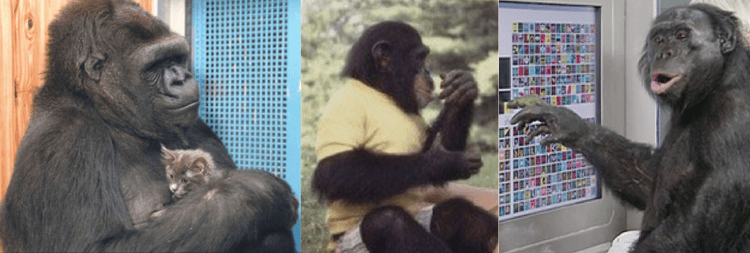 | ||
Known for Intelligent use of lexigram Relatives Matata (mother)Panbanisha (sister)Nyota (nephew)Nathen (nephew) | ||
Ape makes a fire kanzi the bonobo makes a campfire
Kanzi (born October 28, 1980), also known by the lexigram (from the character 太), is a male bonobo who has been featured in several studies on great ape language. According to Sue Savage-Rumbaugh, a primatologist who has studied the bonobo throughout his life, Kanzi has exhibited advanced linguistic aptitude.
Contents
- Ape makes a fire kanzi the bonobo makes a campfire
- Kanzi the bonobo talks to reporters
- Biography
- Examples of Kanzis behavior and abilities
- Research programs
- Anecdotes
- Language
- References
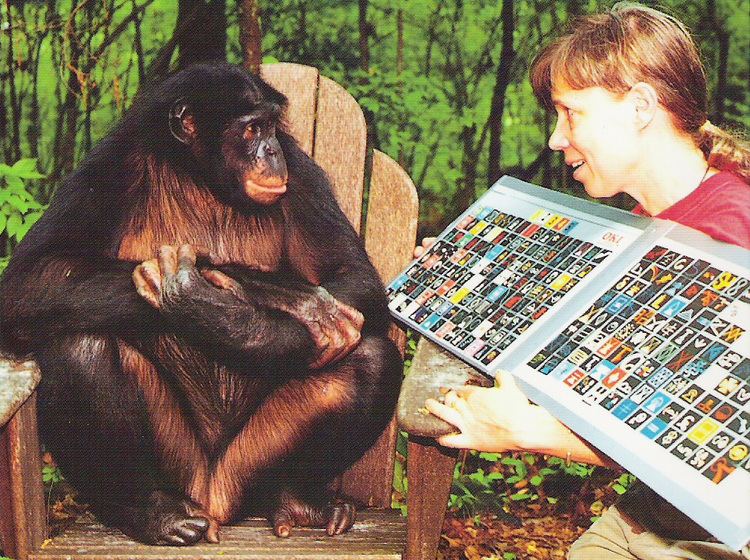
Kanzi the bonobo talks to reporters
Biography
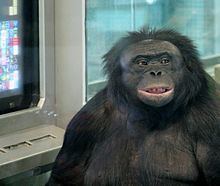
Born to Lorel and Bosandjo at Yerkes field station at Emory University and moved to the Language Research Center at Georgia State University, Kanzi was stolen and adopted shortly after birth by a more dominant female, Matata. Kanzi and his sister (Matata's offspring, now deceased) moved to the Ape Cognition and Conservation Initiative (ACCI), formerly the Great Ape Trust, in Des Moines, Iowa, where Kanzi is the alpha male of the resident community of Bonobos. He turned 36 in October 2016.
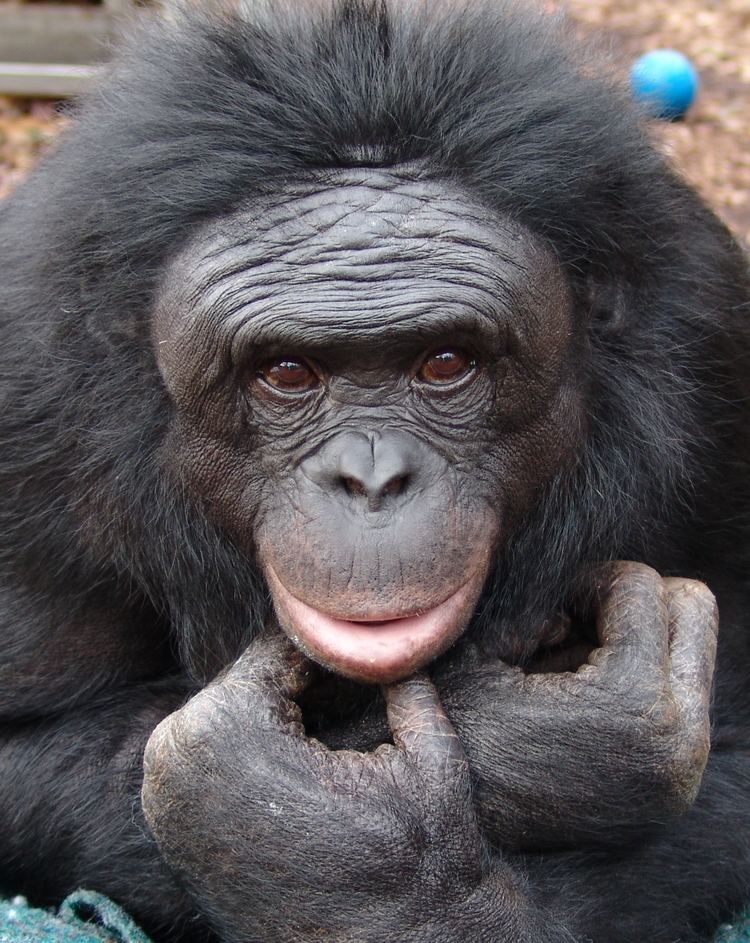
As an infant, Kanzi accompanied Matata to sessions where Matata was taught language through keyboard lexigrams, but showed little interest in the lessons. It was a great surprise to researchers then when one day, while Matata was away, Kanzi began competently using the lexigrams, becoming not only the first observed ape to have learned aspects of language naturalistically rather than through direct training, but also the first observed bonobo to appear to use some elements of language at all. Within a short time, Kanzi had mastered the ten words that researchers had been struggling to teach his adoptive mother, and he has since learned more than two hundred more. When he hears a spoken word (through headphones, to filter out nonverbal clues), he points to the correct lexigram.
According to a Discover article, Kanzi is an accomplished tool user.
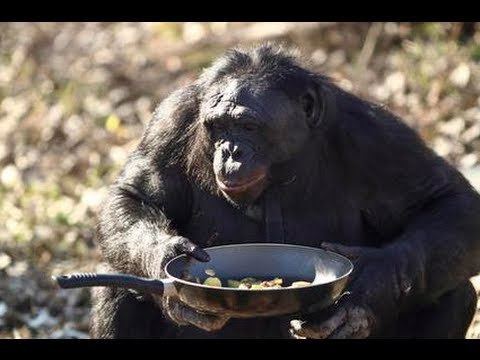
Kanzi's adoptive mother, Matata, lived to be one of world's oldest captive bonobos until her death in June 2014. In the matriarchal society of bonobos, a male's position is primarily determined by the position of the females he is related to; Matata was the group's chief leader. According to the Smithsonian magazine, Kanzi "has the mien of an aging patriarch – he's balding and paunchy with serious, deep-set eyes." This description is confirmed by a full-page color photograph of Kanzi in the March 2008 National Geographic, and a full-page black-and-white photograph in Time magazine.
Teco, son of Kanzi, was born June 1, 2010.
Examples of Kanzi's behavior and abilities
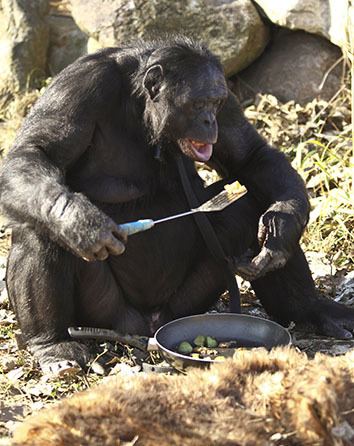
Kanzi's behavior and abilities have been the topic of research published in scientific journals, as well as reports in popular media.
Research programs
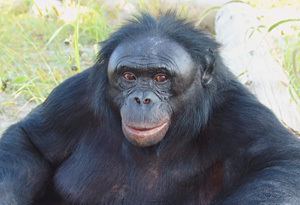
When he was eight years old, Kanzi was a subject of a research program in which his ability to respond to spoken requests was compared with that of a two-year-old human child called Alia. The study took nine months to complete. Kanzi and Alia were given 660 spoken instructions, asking them to deal with familiar objects in novel ways. Kanzi responded correctly to 74 percent of the instructions, Alia to 65 percent.
Another study aimed to see whether Kanzi could learn to make and use stone knives comparable to Oldowan tools. Kanzi was taught by Dr. Nick Toth, who is an anthropologist with the Stone Age Institute in Bloomington, Indiana. Kanzi created stone knives which are very sharp and can cut animal hide and thick ropes. In the experiment, Kanzi was not only taught how to flake, he also developed his own method by throwing the cobbles onto hard surfaces to make a flake, as opposed to the hand-held percussion method that was taught to him. Kanzi's own method is what produced the majority of the 294 artifacts produced during the experiment.
Anecdotes
The following are highly suggestive anecdotes, not experimental demonstrations.
Language
Although Kanzi learned to communicate using a keyboard with lexigrams, Kanzi also picked up some American Sign Language from watching videos of Koko the gorilla, who communicates using sign language to her keeper Penny Patterson; Savage-Rumbaugh did not realize Kanzi could sign until he signed "You, Gorilla, Question" to anthropologist Dawn Prince-Hughes, who had previously worked closely with gorillas. Based on trials performed at Yerkes Primate Research Center, Kanzi was able to correctly identify symbols 89-95% of the time.
Kanzi cannot speak vocally in a manner that is comprehensible to most humans, as bonobos have different vocal tracts from humans, which makes them incapable of reproducing most of the vocal sounds humans make. At the same time, it was noticed that every time Kanzi communicated with humans with specially designed graphic symbols, he also produced some vocalization. It was later found out that Kanzi was actually producing the articulate equivalent of the symbols he was indicating, although in a very high pitch and with distortions.
